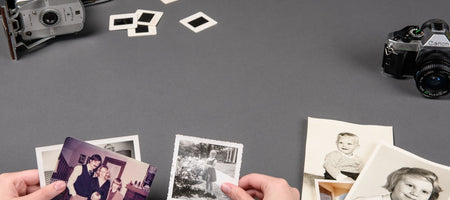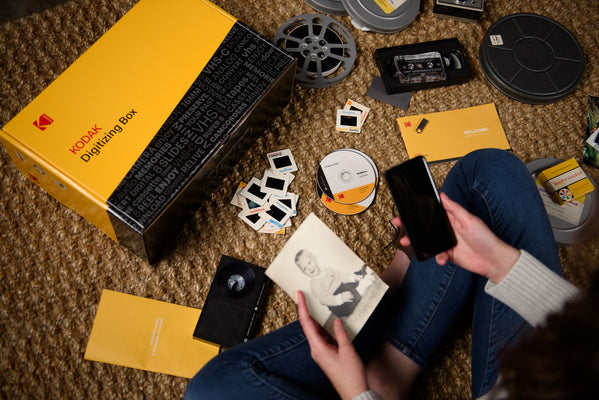Over the years, Polaroids have become as synonymous with instant photography as Kleenex is with tissues. As Band Aids are to bandages. Google to the internet. Chap Stick to lip balm … you get the point. Everyone knows what a Polaroid is without having to go into much detail about how it works or the details behind it. It just is, and that’s that.
Which actually begs the question: What exactly is a Polaroid picture and how does it work?
The invention and popularity of the Polaroid camera
In 1947, Edwin Herbert Land, an American scientist and inventor created the first Polaroid camera, the Model 95. The inspiration came a few years earlier when his daughter asked him on vacation why she couldn’t instantly see the photos they had just taken. An innocent question Land took to heart. So he got to work, and when the instant camera finally hit Boston store shelves around Christmas of 1948, the 57 cameras they had stocked at the local department store sold out within hours.
For an invention that was created on the dawn of post WWII, the Polaroid saw instant (pun intended) success throughout the decades before skyrocketing to popularity and profitability in the 90s. However, that uptick in sales ran into a digital wall in the 2000s as soon as the new millennium rolled around and digital cameras became the new and improved kid on the block. After all, Polaroids are fast developing photos but digital shots are truly instant.
Funny enough, Polaroids have recently sparked a resurgence in popularity yet again as a nostalgic item similar to vinyl records and cassette tapes. They’ve become a fun trend for people who grew up with them and for new generations looking to recapture a little sliver of the past.
How do Polaroid cameras work?
It doesn’t matter what generation you are, if you see a Polaroid picture, your first instinct is to shake that photo until the picture emerges. Which, I wouldn’t recommend, by the way, but I’ll get to that later. The question of the hour is, how many people really know how Polaroids work?
Well, it starts with loading in a sheet of plastic negatives covered in reactive chemicals. When the picture is snapped, a negative rolls into the camera lens and is held in place for an instant.
During the action of taking the picture, the camera’s shutter opens and lets in a pattern of light reflecting the photographed image while exposing the negative, which is coated in three layers of silver compounds, to the light. Each of the three layers of chemicals takes in a different primary color – red, blue or green.
Those same rollers that moved the negative into the camera lens then eject the photo and while doing so also press down on the white borders of the film strip to release the reagent chemical held inside. When this chemical is released, it causes the reaction that produces the actual photo. And voila! You have an instant photo.
The period of time it takes the photo to turn from black and gray to full color is the reaction process taking place. And contrary to popular belief, it’s advised to not shake a photo during the instant development for the risk of affecting the natural developing process. And blowing on it is even worse as your saliva can actually hinder the chemical reaction.
Digitize your Polaroids today
Do you have any old photo albums full of Polaroids? If so, you can send them into SouthTree and we’ll professionally preserve them for you in new digital formats, including a thumb drive, download or DVD. Play them, share them, post them, and if you want, shake them to your heart’s content!













